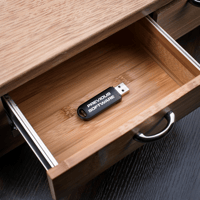With over 38 years in the industry, JETCAM has thousands of customers around the world. However,...
Purchase or subscription? Which model is right for you?
Many companies are driving customers towards pay-as-you-go subscription models. While in some cases this provides a cost-effective /desirable way to access products and services, it can work out more expensive depending on what basis the subscription is charged.

What are the options?
Option 1: Purchasing the software
The most traditional option is to purchase a license of the software. This will usually be a larger up-front cost. Ongoing costs would then be limited to maintenance/support costs, plus any custom requests that perhaps fall outside of the agreed scope of support. The benefit is that if you have calculated your ROI period, once this has been met it’s all profit after that.
Option 2: Subscription/Rental
Subscription or rental gives you a more financially accessible way of accessing the same system. Costs will be ongoing, usually charged monthly or quarterly and will be fixed in advance. Maintenance and regular updates of the software will usually also be included.
A significant benefit of subscription is that many departments may be able to sign off costs that are below a certain level. This therefore allows them to move ahead immediately, without having to go through lengthy internal procedures.
JETCAM offers an addition advantage: if a customer decides to purchase a license after subscribing for a period of time, 50% of the paid subscription will be credited against the cost of the license (up to 50% of the value of the license cost). This allows companies to implement the system with a lower startup cost and without delays, yet still get some of that outlay to put towards a one-off purchase, further reducing their long-term cost of such a system.
One final point is that you can stop subscribing at any point. Many existing JETCAM customers will add rental licenses during busy periods, allowing them to quickly scale up on demand. For others, this give them the opportunity to save money if their situation changes and the software is no longer required, perhaps if a machine is due to be sold.
Option 3: Pay as you Use
This is similar to subscription/rental, in that a monthly fee is charged, however the fee is tied to customer’s usage of the software. For example, they may charge certain amount per nest generated, or based it on the size/length of the nest generated. While this again provides an accessible way of implementing powerful solutions, this model may not lend itself to the way that many companies will need to work. For example, customers looking to strike a balance between material efficiency versus easy unloading of a nest may produce multiple nests. Ultimately, they would only use one but may be charged for all of them. Other companies use features such as nesting around defects, but when they find the defect’s location doesn’t actually match the record (which actually happens quite often), a new nest will have to be created, again possibly resulting in an additional charge.
NOTE: JETCAM does not offer a pay-as-you-use pricing model.
Which pricing model is right for you?
The pricing model that you select will depend on several factors. Cashflow and internal sign-off might push you towards subscription, with the added benefit that you can get a refund for half of it against a subsequent purchase if the software performs as expected. If the aim is to achieve maximum efficiency with minimum overall outlay, then purchasing a license will usually be the most cost-effective.
In cases where initial purchase funds are not available (either immediately or perhaps not even at all), the savings the software can make may easily cover monthly rental, while also providing additional significant benefits. This immediately delivers the ‘return on investment’, assuming the software can deliver what it promises, of course!
Summary
The acquisition of a new software product is often seen as riskier than a new CNC machine, where ‘new for old’ specifications are easier to compare. However, having different purchasing options can help companies to implement a system that otherwise would need to go through lengthy purchasing processes if the initial cost is over a certain threshold.
%20(Custom).jpg?width=1000&height=252&name=JETCAM%20logo%20(glossy%20effect)%20(Custom).jpg)


